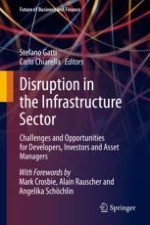A number of dramatic changes are currently reshaping infrastructure, a sector that investors and asset managers have traditionally considered to be a safe harbor in the field of alternative investments. Understanding the future of infrastructure is indispensable to guaranteeing a sustainable future for our planet and the welfare of the world’s population, and enhancing our knowledge of this asset class is one important step we can take toward reaching this crucial goal.
This book collects a series of contributions by a group of Bocconi University researchers under the Antin IP Associate Professorship in Infrastructure Finance, which cover the key megatrends that are expected to reshape the way we think about infrastructure, and the implications for infrastructure investors and asset managers. Its goal is to improve and disseminate the culture of infrastructure among academics, professionals and policymakers. The main focus is on Europe and the European Union, and specifically on three key sectors: power and energy, transportation infrastructure, and telecoms / ICT.
